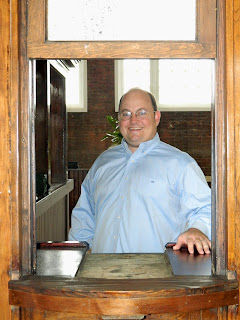Miniature Artist Extra Ordinaire
Lucy Stanton found her niche as a miniature artist. In fact, she became famous both in the United States and around the world. To prove that assertion, Lucy Stanton was awarded the highly coveted Bronze Medal of the Society of American Miniature painters, being the first or second woman in America to receive such a distinction. For one brief term, this teenage artist taught art at what is now called Middle Georgia State College.
An artist who worked with oils, pastels and watercolors, Miss Stanton is most recognized for her miniature watercolor portraits on ivory during the Arts and Crafts period at the turn of the 20th Century. Critics laud her mature style, innovative use of broad washes and evocative portraits depicting African Americans without sentimentality or prejudice.
Lucy May Stanton was born to William L. and Frances MeGee Stanton, on May 22, 1875. As a child, Lucy grew up living across the street from the legendary Georgia journalist and writer Joel Chandler Harris, the author of the Uncle Remus tales.
It is said at the age of four, Lucy began to mold creatures out of modeling clay and took her first art lessons in New Orleans when she was a mere seven-years-old.
Lucy became totally captivated with the arts when she attended Southern Female College in LaGrange, which later became known as Cox College after its removal to College Park. As an 18-year-old, Lucy accepted a position as an art teacher at the New Ebenezer College in Cochran, which is currently known as Middle Georgia State College. After serving a one year term during the 1893-1894 school year, Lucy returned to the Atlanta area.
Lucy traveled to Paris, France to receive a formal and very prestigious education in painting. She would remain in the capital of European art for two years until 1898. Seven years later, Lucy returned to France to further improve her artistic talents.
Stanton's first paying job came in 1896 when she was commissioned to paint miniature portraits of Spanish born opera singer Adelina Patti. Over her thirty five-year career, Lucy May Stanton would become one of Georgia's premier portrait artists, painting portraits of her former neighbor, Joel Chandler Harris, (LEFT) and the iconic Georgia politician, Howell Cobb, who served as Speaker of the United States House of Representatives, the latter of which still hangs in the national capital.
After a single year spent in New York, Lucy Stanton returned to Georgia in 1902 to make her home in Athens, where she would live for most of the remainder of her life. By her late twenties, Lucy became a popular artist across the country. Her works were exhibited in galleries in the largest cities in the world, including London, Paris, New York, Boston and Philadelphia.
Stanton moved to Boston, Massachusetts in 1916, where she painted and taught art for nearly a decade.
Lucy May Stanton's interests extended beyond the visual arts. Stanton was highly involved in the social, cultural and political affairs of Athens and the nation. In 1914, she headed the Equal Suffrage League of Athens.
In 1928, Stanton, along with Jeannette Rankin, helped to co-found the Georgia Peace Society, an organization dedicated to preventing any more wars. Rankin, the first woman elected to the United States House of Representatives, voted against the country's entrance into World War I and lead the fight to adopt the 19th Amendment to allow women the right to vote.
''It was so interesting to me ... She was one of the first people to paint (African Americans) in a serious fashion, without propaganda or sentiment.'' Georgia Museum of Art Curator Betty Alice Fowler told the Athens Banner Herald.
"She did a lot of stuff that I certainly don't think my grandmother or great-grandmother were doing at the time. She was well educated, clever, smart and talented. She made the most of it,'' Fowler added.
At the height of her career, Stanton's works were featured in a solo exhibition in Atlanta's High Museum of Art.
A worldwide acclaimed artist, Lucy May Stanton's seemingly endless list of awards includes; The Salon de la Société Nationale des Beaux-Arts (Blue Ribbon, Paris, 1906), Pennsylvania Society of Miniature Painters (Bronze Medal, 1917), Atlanta Art Association (first prize, 1917), Concord Art Association (Medal of Honor, 1923), and National Association of Women Painters and Sculptors (honorable mention, 1925).
More than eighty years after her death in Athens on March 19, 1931, her works are among the collections of the Metropolitan Museum of Art in New York, the Museum of Fine Arts in Boston, the National Portrait Gallery in Washington, D.C., the Philadelphia Museum of Art, Emory University, and the Georgia Museum of Art.














